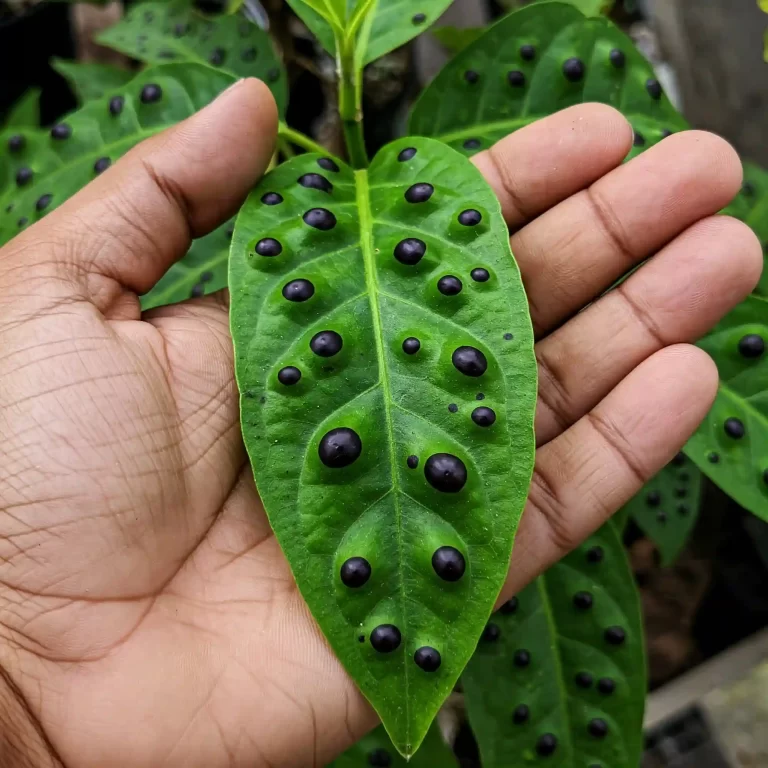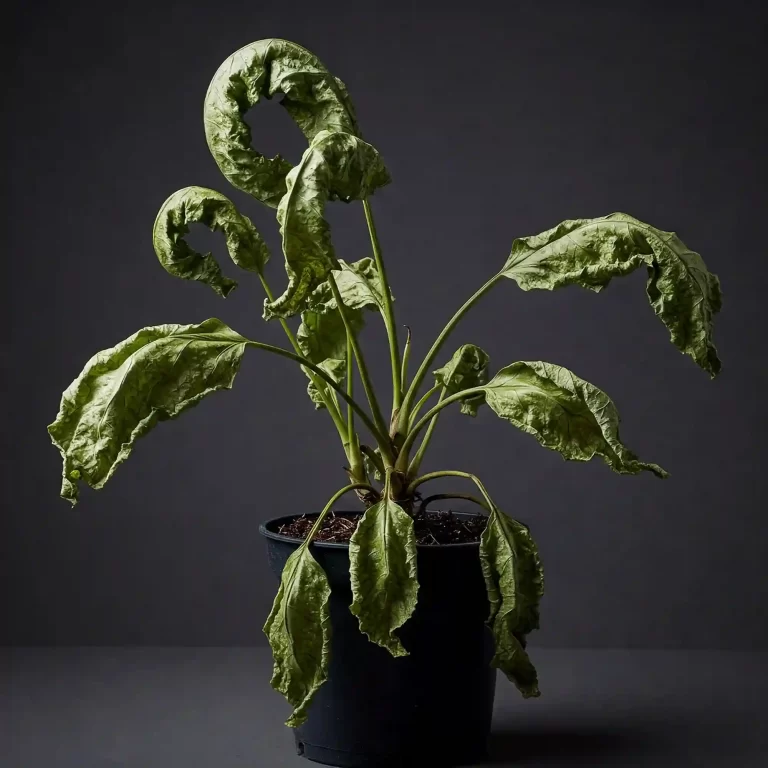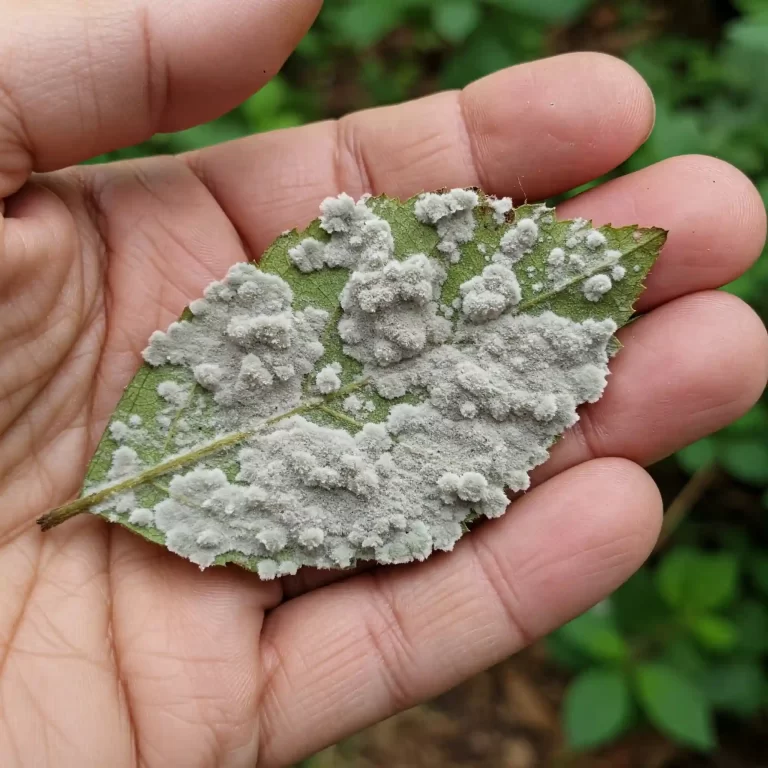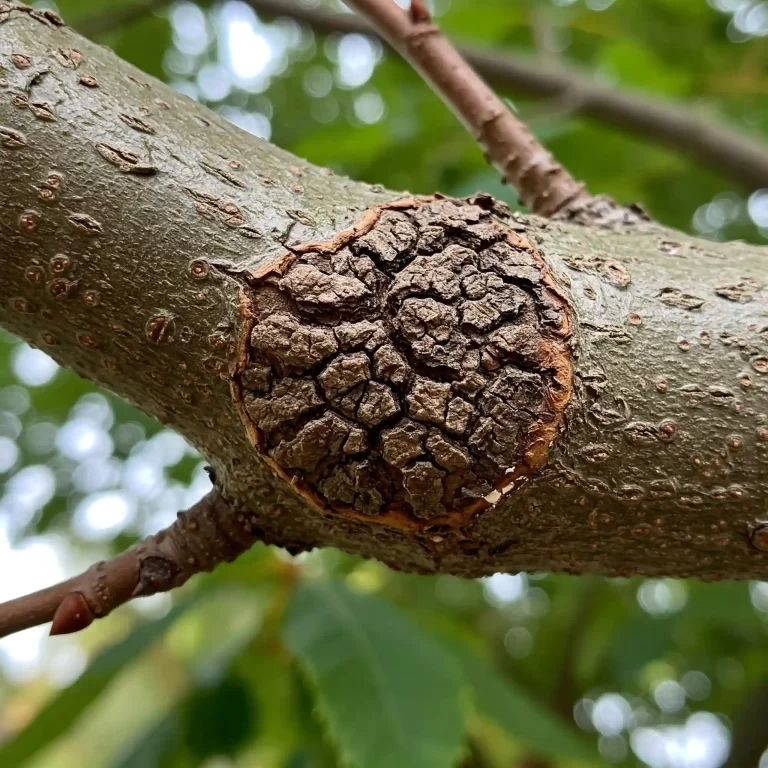| Key Takeaways |
|---|
| – Brown leaves on corn plants can indicate various problems with their care and environment, such as inconsistent watering, low humidity, fluoride toxicity, cold draft, too much or too little light, incorrect fertilizer application, pests, or fungal infections. |
| – The symptoms of brown leaves can vary, such as brown tips, brown spots, brown edges, brown patches, or entirely brown leaves. They can affect the health and appearance of the plant, and lead to further complications if not treated. |
| – The solutions for brown leaves depend on the causes, but some general tips are to water the plant properly, increase the humidity around it, reduce the fluoride content in the water, protect it from cold drafts, provide it with optimal light conditions, fertilize it correctly, and control and eliminate pests and diseases. |
| – Corn plants are easy to care for and have many benefits, such as purifying the air, adding beauty and color to your home, reducing stress and anxiety, etc. With some attention and love, you can keep your corn plant healthy and happy. |
Corn plants, also known as dracaena, are popular houseplants that can add a touch of tropical elegance to your home. They have long, glossy, green leaves that can grow up to several feet tall. They are easy to care for and can adapt to various indoor conditions. However, they are not immune to problems, and one of the most common ones is brown leaves.
Brown leaves on corn plants can indicate that something is wrong with their care and environment. They can be a sign of stress, damage, or disease. They can also affect the health and appearance of the plant, and lead to further complications if not treated. Therefore, it is important to identify the causes, symptoms, and solutions of brown leaves on corn plants, and learn how to prevent and treat them.
In this article, we will cover everything you need to know about corn plant care brown leaves, including:
- The causes of brown leaves on corn plants
- The symptoms of brown leaves on corn plants
- The solutions for brown leaves on corn plants
- The general tips for corn plant care
By the end of this article, you will have a complete guide on how to save your corn plant from brown leaves, and how to keep it healthy and happy. Let’s get started!
Causes of Brown Leaves on Corn Plants
There are many factors that can lead to brown leaves on corn plants, and they can be divided into two categories: environmental and biological. Environmental factors are related to the conditions that the plant is exposed to, such as water, humidity, temperature, light, etc. Biological factors are related to the health and well-being of the plant, such as pests, diseases, etc. Here are some of the most common causes of brown leaves on corn plants, and how they affect the plant:
| Cause | Effect |
|---|---|
| Inconsistent watering | Corn plants need regular watering, but not too much or too little. Overwatering can cause root rot, which can damage the roots and prevent them from absorbing water and nutrients. Underwatering can cause the plant to dry out and lose moisture. Both can cause the leaves to turn brown. |
| Low humidity | Corn plants are native to tropical regions, where the air is humid and moist. Dry indoor air can cause the leaves to lose moisture and turn brown. Low humidity can also make the plant more susceptible to pests and diseases. |
| Fluoride toxicity | Corn plants are sensitive to fluoride, which is often added to tap water. Fluoride can accumulate in the soil and damage the roots and leaves of the plant. It can cause the tips and edges of the leaves to turn brown and crispy. |
| Cold draft | Corn plants do not like sudden changes in temperature, especially cold ones. If the plant is placed near a window, door, or air conditioner, it may be exposed to cold drafts that can cause the leaves to turn brown. Cold drafts can also stress the plant and make it more vulnerable to pests and diseases. |
| Too much or too little light | Corn plants need bright indirect light, but not direct sunlight. Too much light can cause the leaves to burn and turn brown. Too little light can cause the leaves to lose their color and turn brown. |
| Incorrect fertilizer application | Corn plants need a balanced fertilizer once a month during the growing season, but not too much or too little. Too much fertilizer can cause salt buildup in the soil, which can burn the roots and leaves of the plant. Too little fertilizer can cause the plant to lack nutrients and turn brown. |
| Pests | Corn plants can be attacked by various pests, such as spider mites, mealybugs, thrips, etc. These pests can suck the sap and nutrients from the plant, and leave behind honeydew, webs, or other signs of infestation. They can cause the leaves to turn yellow, brown, or drop off. |
| Fungal infections | Corn plants can be infected by various fungi, such as fusarium, pythium, rhizoctonia, etc. These fungi can enter the plant through the roots, stems, or leaves, and cause rotting, wilting, or discoloration. They can cause the leaves to turn brown, black, or mushy. |
As you can see, there are many possible causes of brown leaves on corn plants, and they can have different effects on the plant. Therefore, it is important to identify the specific cause of the problem, and apply the appropriate solution. In the next section, we will discuss how to recognize the symptoms of brown leaves on corn plants, and how to diagnose the problem.
Symptoms of Brown Leaves on Corn Plants
The symptoms of brown leaves on corn plants can vary depending on the cause and the severity of the problem. However, some common ways that brown leaves can manifest on corn plants are:
- Brown tips: This is when the tips of the leaves turn brown and crispy, while the rest of the leaf remains green. This can indicate that the plant is suffering from fluoride toxicity, salt buildup, or inconsistent watering.
- Brown spots: This is when the leaves develop brown spots or patches, which can be circular, irregular, or blotchy. This can indicate that the plant is infected by fungal diseases, such as fusarium or pythium, or attacked by pests, such as spider mites or mealybugs.
- Brown edges: This is when the edges of the leaves turn brown and dry, while the center of the leaf remains green. This can indicate that the plant is exposed to low humidity, cold draft, or too much light.
- Brown patches: This is when the leaves develop large areas of brown discoloration, which can cover most or all of the leaf. This can indicate that the plant is suffering from root rot, overwatering, or underwatering.
- Entirely brown leaves: This is when the whole leaf turns brown and dies, and may fall off the plant. This can indicate that the plant is severely stressed, damaged, or diseased, and may not recover.
As you can see, the symptoms of brown leaves on corn plants can vary in appearance and extent, and can have different implications and consequences for the plant. Therefore, it is important to monitor the plant regularly and check for any signs of brown leaves, and take action as soon as possible. In the next section, we will discuss how to treat and prevent brown leaves on corn plants, and how to restore the plant to its original beauty.
Solutions for Brown Leaves on Corn Plants
The solutions for brown leaves on corn plants depend on the causes of the problem, and may require some trial and error to find the best one for your plant. However, some general tips and methods that can help you prevent and treat brown leaves on corn plants are:
- Watering: Water your corn plant thoroughly until the water drains out of the bottom of the pot, and then let the soil dry slightly before watering again. You can check the soil moisture by inserting your finger 1 to 2 inches deep. If the soil feels dry, water your corn plant. If the soil feels moist, wait for a few days before watering again. You can also use a moisture meter to monitor the soil moisture level. Avoid overwatering or underwatering your corn plant, as both can cause brown leaves.
- Humidity: Increase the humidity around your corn plant by misting it with water a few times a week, using a humidifier, or placing it on a tray of pebbles with water . You can also group your corn plant with other plants to create a humid microclimate. Avoid placing your corn plant near heaters, radiators, or vents, as they can dry out the air and cause brown leaves.
- Fluoride: Reduce the fluoride content in the water by using distilled water, rainwater, or filtered water to water your corn plant . You can also let the tap water sit overnight before using it, as this can help some of the fluoride to evaporate. Avoid using water that has been softened or treated with chemicals, as they can harm your corn plant and cause brown leaves.
- Cold draft: Protect your corn plant from cold drafts by moving it to a warmer spot, away from windows, doors, or air conditioners . You can also cover your corn plant with a cloth or a plastic bag at night, or during the winter, to keep it warm and cozy. Avoid exposing your corn plant to sudden changes in temperature, as they can stress the plant and cause brown leaves.
- Light: Provide your corn plant with bright indirect light, but not direct sunlight. You can place your corn plant near a window that faces east or west, or use a sheer curtain or a blind to filter the light . You can also use artificial lights, such as fluorescent or LED bulbs, to supplement the natural light. Avoid placing your corn plant in a dark or shady spot, or under direct sunlight, as both can cause brown leaves.
- Fertilizer: Apply a balanced fertilizer, such as a 10-10-10 or a 20-20-20 formula, to your corn plant once a month during the growing season, but not during the winter . You can use a liquid, granular, or slow-release fertilizer, and follow the instructions on the label. Avoid overfertilizing or underfertilizing your corn plant, as both can cause brown leaves.
- Pests: Control and eliminate pests, such as spider mites, mealybugs, thrips, etc., by inspecting your corn plant regularly and looking for signs of infestation, such as honeydew, webs, or white cottony masses . You can use a magnifying glass to see the pests more clearly. You can also use a soft cloth or a cotton swab dipped in alcohol to wipe off the pests, or spray your corn plant with a solution of water and mild soap, or a commercial insecticide, following the directions on the label. Avoid using harsh chemicals or pesticides, as they can damage your corn plant and cause brown leaves.
- Fungal infections: Prevent and treat fungal infections, such as fusarium, pythium, rhizoctonia, etc., by keeping your corn plant clean and healthy, and avoiding overwatering, overcrowding, or wounding the plant . You can also use a sterile potting mix, and sterilize your tools and pots before using them. You can also use a fungicide, such as copper, sulfur, or neem oil, to treat the infected parts of the plant, following the instructions on the label. Avoid spreading the infection to other plants, and remove any dead or diseased leaves as soon as possible.
These are some of the best practices and methods to prevent and treat brown leaves on corn plants, and to restore them to their original beauty. However, these solutions may not work for every plant, and some plants may not recover from the damage. Therefore, it is important to be patient and persistent, and to try different solutions until you find the one that works for your plant. In the next section, we will provide some general tips on how to care for corn plants, and how to enjoy their benefits.
General Tips for Corn Plant Care
Corn plants are easy to care for and have many benefits, such as purifying the air, adding beauty and color to your home, reducing stress and anxiety, etc. With some attention and love, you can keep your corn plant healthy and happy. Here are some general tips on how to care for corn plants:
- Acclimate your corn plant to a new environment. When you bring your corn plant home, or move it to a different spot, give it some time to adjust to the new conditions. You can do this by gradually exposing it to the new light, temperature, and humidity levels, and avoiding any drastic changes. This can help your corn plant to adapt and avoid stress.
- Repot your corn plant when needed. Corn plants can grow quite large, and may outgrow their pots over time. You can repot your corn plant when you notice that the roots are coming out of the drainage holes, or that the soil is drying out too quickly. You can use a pot that is one or two sizes larger than the previous one, and fill it with a well-draining potting mix. You can also prune the roots if they are too long or tangled. This can help your corn plant to have more space and nutrients to grow.
- Prune your corn plant to maintain its shape and size. Corn plants can grow up to several feet tall, and may become leggy or floppy if not pruned. You can prune your corn plant by cutting off the top or the sides of the stem, or removing any dead or damaged leaves. You can use a sharp and sterile knife or scissors, and make clean and smooth cuts. You can also use the cuttings to propagate new plants. This can help your corn plant to look neat and tidy, and to produce more branches and leaves.
- Propagate your corn plant to create new plants. Corn plants are easy to propagate, and you can use the cuttings from pruning, or the offshoots from the base of the plant. You can place the cuttings or the offshoots in water or soil, and keep them in a warm and bright spot. You can change the water every few days, or water the soil when it feels dry. You can also use a rooting hormone to speed up the process. You can transplant the new plants into pots when they have developed roots. This can help you to multiply your corn plant collection, and to share them with your friends and family.
These are some of the general tips on how to care for corn plants, and how to enjoy their benefits. By following these tips, you can ensure that your corn plant will thrive and flourish.
Conclusion
In this article, we have covered everything you need to know about corn plant care brown leaves, including:
- The causes of brown leaves on corn plants, such as inconsistent watering, low humidity, fluoride toxicity, cold draft, too much or too little light, incorrect fertilizer application, pests, or fungal infections.
- The symptoms of brown leaves on corn plants, such as brown tips, brown spots, brown edges, brown patches, or entirely brown leaves.
- The solutions for brown leaves on corn plants, such as watering them properly, increasing the humidity around them, reducing the fluoride content in the water, protecting them from cold drafts, providing them with optimal light conditions, fertilizing them correctly, and controlling and eliminating pests and diseases.
- The general tips for corn plant care, such as acclimating them to a new environment, repotting them when needed, pruning them to maintain their shape and size, and propagating them to create new plants.
We hope that this article has helped you to understand how to save your corn plant from brown leaves, and how to keep it healthy and happy. If you have any questions or comments, please feel free to share them below. We would love to hear from you.
Thank you for reading, and happy gardening!




[…] blood. Dracaena lemon lime is a cultivar of dracaena fragrans, a species that is also known as corn plant or mass cane. It has a thick, woody stem and long, sword-shaped leaves that are striped with green […]